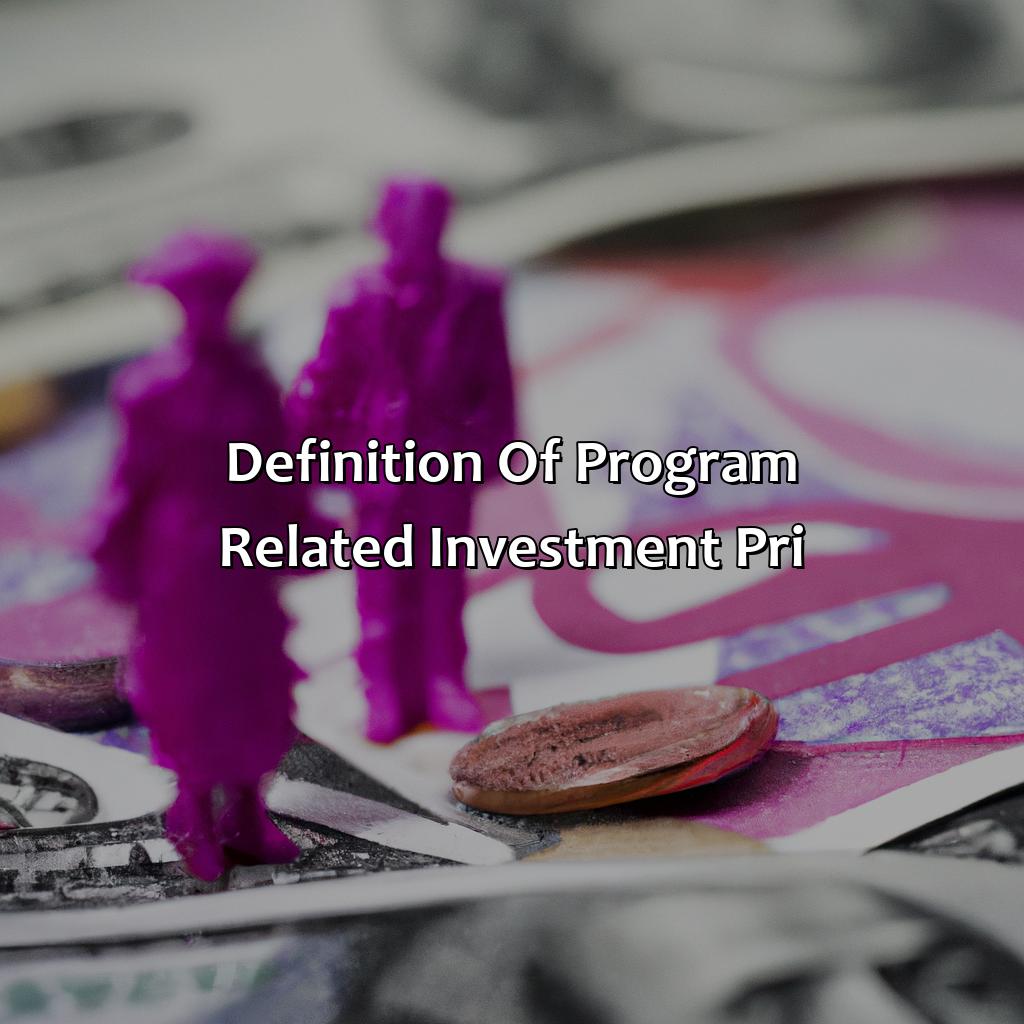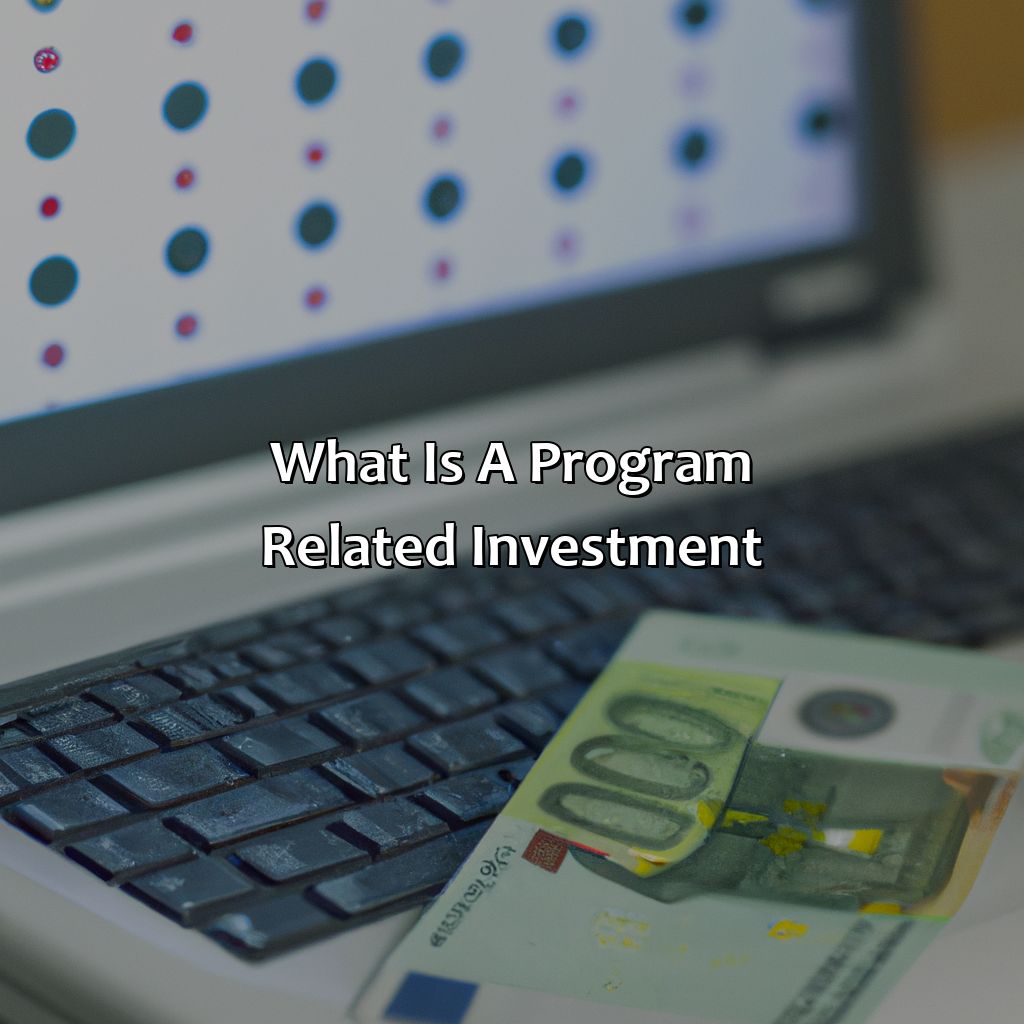What Is A Program Related Investment?
Key Takeaway:
- A Program Related Investment (PRI) is an investment made by a foundation that is primarily motivated by social benefits rather than financial returns. It is within the foundation’s mission to make this type of investment.
- The types of PRI include loans, equity investments, and guarantees. PRI is subject to IRS regulations, which limit the investment’s purpose and prohibit private benefit for individuals or shareholders.
- PRI allows for flexible and patient capital that can enable social and environmental impact. However, there are also challenges, including limited financial returns and regulatory compliance.
Struggling to understand how Program Related Investments (PRIs) work? You’re not alone. This article explains the key features of PRIs – the investments of choice for many foundations – so you can decide if they are the right fit for you.
Definition of Program Related Investment (PRI)
Program Related Investment (PRI) is an investment made by charitable organizations to support their charitable activities. PRI’s are intended to further a public good and are not made for the primary purpose of generating income. These investments can take various forms, including loans, equity investments, and guarantees. PRI’s are typically made to support specific programs or projects aligned with the organization’s charitable mission. Such investments can help charitable organizations achieve their objectives while also providing them with a financial return.
PRI’s are often used by foundations, charities, and other philanthropic organizations to support social and environmental programs. This type of investment can be used to support a wide range of initiatives, including affordable housing, renewable energy, education, and healthcare. PRI’s can provide organizations with a way to leverage their assets to achieve a greater impact beyond traditional grantmaking.
It’s important to note that PRI’s are subject to regulations and restrictions set by the Internal Revenue Service (IRS), which requires that the investments are primarily intended to further the organization’s charitable purposes. PRI’s may also be subject to monitoring and evaluation to ensure that they are being used to achieve their intended outcomes.
Pro Tip: PRI’s can be a powerful tool for organizations seeking to achieve their social and environmental missions while also generating financial returns. However, it’s important to carefully consider the risks involved and ensure that investments are aligned with the organization’s mission and goals.

Image credits: retiregenz.com by Joel Washington
Characteristics of PRI
PRI (Program Related Investment) refers to investments made by foundations, nonprofit organizations, or charities to support a specific program or mission. These investments are made with the intention of generating positive social or environmental impact, rather than solely for financial returns.
Such investments can take many forms, including loans, equity investments, or guarantees, and they can support a variety of activities, such as research, development, or the scaling of successful programs. PRI investments are expected to have a measurable impact on the organization’s intended beneficiaries, and investors may work closely with the recipient organizations to ensure these goals are met.
PRI investments have several distinguishing characteristics from traditional investments. First, they prioritize social and environmental impact over financial returns. Second, they are typically made at below-market rates or with flexible repayment terms, to support organizations that may not have access to traditional financing. Finally, they often involve greater collaboration between investors and recipients, with a shared focus on achieving specific social or environmental outcomes.
A notable example of a successful PRI investment is the Ford Foundation’s investment in SHARE Microfinance Limited in India. The foundation provided a loan to SHARE to support its microfinance lending activities to women entrepreneurs in rural India, and the investment has been credited with helping millions of women lift themselves out of poverty.
In summary, PRI investments are a unique type of investment made with the intention of generating measurable social or environmental impact, and they have several distinguishing characteristics that set them apart from traditional investments.

Image credits: retiregenz.com by Harry Woodhock
Types of PRI
PRI Varieties: Table and Factors to Consider
A program related investment or PRI is a type of investment that aims to support a charitable or philanthropic goal. There are several types of PRI that investors can choose depending on their investment objective. Consider the table below to understand PRI varieties.
| Type of PRI | Definition |
|---|---|
| Loans | A finance arrangement with an expectation of repayment with or without interest. |
| Guarantees | An enforceable promise of payment in case of default on a loan or debt instrument. |
| Deposits & Accounts | A program-related investment in a deposit or savings account that offers below market rate return. |
| Mission-related | Investment intended to advance or complement a charity organization’s mission while expecting a return on investment. |
Several factors considered while selecting a PRI type are PRI purpose, risk, and source of funds. PRI purpose involves questions like whether the PRI aligns with the organization’s values or allowing a broader social impact. Risk involves analysis of risks involved in different PRI types with respect to the investor’s capabilities and threshold. The source of funds enables philanthropic foundations and donor-advised fund holders to diversify investments to achieve a broader charitable impact.
PRI’s are an effective source for asset allocation as the investment has the potential to support charity and achieve financial returns. The Global Impact Investing Network reports that this market reached $715bn in assets under management.

Image credits: retiregenz.com by Joel Jones
IRS regulations for PRI
The Internal Revenue Service (IRS) has set out rules and regulations for Program Related Investments (PRI). These guidelines stipulate that PRI’s must primarily serve charitable purposes and not impart any significant financial gain to the investor. Additionally, such investments must align closely with the charity’s goals and objectives.
These regulations aim to encourage philanthropy and social initiatives while minimizing any potential for abuse or exploitation of tax-exempt funds. PRI’s are an excellent way for foundations to invest in social projects while still maintaining compliance with tax regulations. By adhering to the IRS’s prescribed guidelines, organizations can ensure that their investments are both socially responsible and financially sound.
It is crucial to note that the PRI guidelines are dynamic and can change from time to time as per the requirement. Therefore, organizations need to remain up-to-date with any changes to these regulations.
One suggestion for organizations is to seek professional advice from legal and financial experts before making any PRI investments. This can help ensure compliance with the IRS’s rules and regulations, as well as identify opportunities for better investment returns.
Another suggestion is to carry out due diligence on the charity or social project before investing. This can help determine the credibility and effectiveness of the project, which can impact the success of the PRI investment. By taking such measures, foundations can be confident in their investments’ ability to produce social impact while complying with the PRI guidelines set forth by the IRS.

Image credits: retiregenz.com by David Duncun
Examples of PRI
Examples of Program-Related Investments
Program-Related Investments (PRIs) are investments made by foundations to further their charitable goals while earning a financial return. PRIs can take many forms and can be customized to fit specific needs and goals.
Below is a table showcasing some examples of PRI investments:
| Type of PRI | Description | Example |
|---|---|---|
| Low-interest loans | Loans for projects or initiatives that have a charitable purpose and will provide social benefit | A foundation making a low-interest loan to a nonprofit to build affordable housing |
| Guarantees | Foundations guaranteeing loans made by other organizations to further charitable goals | A foundation guaranteeing a loan made by a community development financial institution to a small business in an underserved area |
| Equity investments | Investments in nonprofits or for-profits that have a charitable purpose | A foundation investing in a social enterprise that employs and trains homeless individuals |
| Program-related grants | Grants that have a charitable purpose but also further the foundation’s organizational goals | A foundation providing a grant to a nonprofit to establish a new program that aligns with the foundation’s mission |
It is important to note that PRIs differ from traditional grants in that they are expected to be repaid or offered at a below-market interest rate. PRIs can also help leverage additional funding from other sources, creating a greater impact.
While PRIs can be an effective tool for foundations to achieve their charitable goals, it is important to carefully evaluate and monitor potential PRI investments to ensure they align with the foundation’s mission and goals.
Overall, PRIs can be a valuable tool for foundations looking to not only give back to their communities but also create lasting change and financial sustainability.

Image credits: retiregenz.com by Joel Washington
Advantages and challenges of PRI
Program related investments (PRI) refer to investments made by foundations or other non-profit organizations that seek both social impact and financial return. These investments provide a unique opportunity to achieve social and environmental impact while maintaining financial sustainability.
Advantages and challenges of PRI:
- Potential for significant social and environmental impact due to the alignment of financial and mission-related goals
- Flexibility in investment terms and structures allows for customized solutions for specific needs
- Potential for greater control over how funds are used as compared to traditional grant-making
- However, PRI may require significant due diligence efforts and can carry higher risks than traditional grant-making
In addition, PRI often require significant ongoing monitoring and reporting, which can be a challenge for organizations with limited capacity for this work.
A true history of PRI involves the Ford Foundation, which made a $1 billion PRI in 2017 towards affordable housing in the US. This investment was made to provide affordable homes to low-income families, and it is an example of the potential of PRI to address critical social needs.

Image credits: retiregenz.com by Yuval Arnold
Some Facts About Program-Related Investment:
Program-related investments (PRIs) are investments made by foundations or charities that are designed to accomplish charitable purposes while also generating financial returns. (Source: National Council of Nonprofits)
PRIs are different from traditional charitable gifts or grants in that they are intended to be repaid and recycled into further charitable investments. (Source: Council on Foundations)
PRIs can take many forms, such as low-interest loans, guarantees, or equity investments in for-profit or nonprofit ventures. (Source: Investopedia)
PRIs are subject to specific rules and regulations to ensure that they are used for charitable purposes and do not provide undue private benefit. (Source: IRS)
PRIs have the potential to leverage private capital to address important social and environmental challenges, such as affordable housing, healthcare, and renewable energy. (Source: Stanford Social Innovation Review)
FAQs about What Is A Program Related Investment?
What is a program related investment?
A program related investment (PRI) is an investment made by a private foundation that is intended to advance the foundation’s charitable purposes. These investments are typically made at below-market rates, and the investment must have a primary purpose of furthering the foundation’s charitable goals.
How is a program related investment different from a regular investment?
A program related investment is different from a regular investment in several ways. First, a PRI must have a charitable purpose, whereas a regular investment does not necessarily have that requirement. Additionally, PRIs are often made at below-market rates, whereas regular investments are made with the expectation of generating a profit.
What are some examples of program related investments?
Program related investments can take many different forms, but some common examples include loans to nonprofit organizations, equity investments in social enterprises, and investments in affordable housing projects.
How do private foundations decide whether to make a program related investment?
Private foundations typically have a team of experts who review PRIs and determine whether they align with the foundation’s charitable purposes. The review process may include analyzing the financial viability of the investment, assessing the potential impact on the community, and evaluating the overall fit with the foundation’s mission.
What are the tax implications of making a program related investment?
Program related investments are typically tax-deductible for private foundations, as they are considered part of the foundation’s charitable giving. Additionally, because PRIs are made at below-market rates, they may result in lower interest income for the foundation, which could reduce the foundation’s tax liability.
 Checkout this IRS Loophole
Checkout this IRS Loophole 
